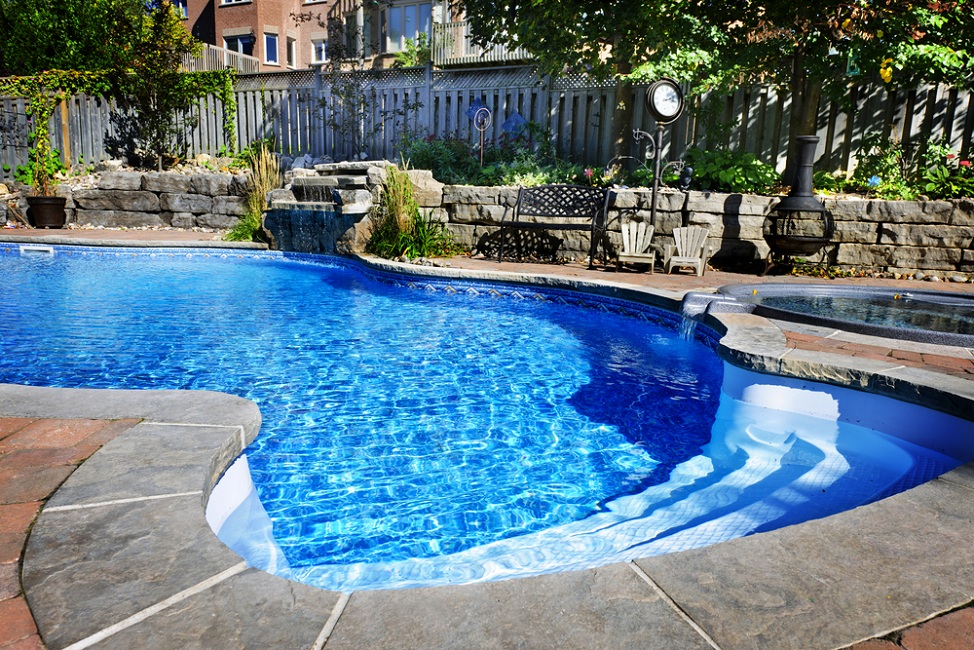Building an inground swimming pool is a big project.
But once you’ve done it, you’ll wonder how you ever lived without one.
It’s an excellent investment for your backyard and something you can enjoy every day.
I’ll show you how to build an inground pool in this article.
I will walk you through everything you need to do, step by step.
So, let’s get started!
Step 1- Choose The Location
You first need to decide where you want to put the pool in your yard.
Also, consider what landscaping you’d like around the pool area. Will you keep grass? Or would you prefer some hardscape?
If you plan to plant flowers and bushes around the pool, you may want to think about planting them now so they grow quickly.
Step 2 - Check Your Local Codes
Now that you know where you want to place the pool, it’s time to check with your local codes.
Most municipalities require permits before you start digging. So, make sure you contact your city hall to find out all the requirements.
They should also tell you whether there are any restrictions on the type of materials you can use.
For example, many cities allow only concrete and brick as material options.
Some require that you install a fence around the perimeter of the pool.
Other things to watch out for include:
- Does the municipality require you to have a permit?
- What does the permit cover?
- Is there anything else you need to know?
Step 3 - Find A Contractor

Once you’ve found the right location for your pool, it’s time for you to hire a contractor who can help you build it.
There are several different ways to find someone to build your pool.
One option is to ask friends and family members for recommendations.
Another option is to search online for contractors near you.
Finally, you can call your local home improvement store and see if they recommend anyone.
Whatever method you choose, make sure you find someone specializing in building pools.
A general contractor won’t necessarily be able to handle the entire job.
Instead, they will subcontract other people to work on specific project parts.
Make sure you find a reputable company that has been in business for several years.
This means they should have experience working with homeowners just like you.
Step 4 - Get Pre-Approval From Your Insurance Company
Before you begin construction, you’ll need pre-approval from your insurance company.
This is because most policies do not cover swimming pools.
So, you’ll need to get approval for the pool before you start digging.
In addition, you’ll need to pay for the pool yourself.
Your insurance policy will usually cover the costs of repairing damage caused by natural disasters such as hurricanes.
But it doesn’t cover the cost of replacing damaged property.
You’ll need to pay for this portion of the repair yourself.
Step 5 - Design the Pool
Once you’ve measured your property, you’ll need to determine how big the pool should be and what shape/design it will take.
Typically, your pool professional will offer to prepare drawings based on your input. It will likely take several attempts to agree on the final design.
Common standard sizes include: Olympic-sized (50×25 feet) and standard-sized (30×20).
When deciding on the size of your pool, it is important not to overbuild. All your downstream ownership costs – heating, cleaning, maintenance, pool pump/filter, et al – will be driven mostly by the gallons of water in your pool.
So make sure you buy the smallest pool that will meet your needs 90% of the time.
Step 6 - Select materials, trim, decking, and other features
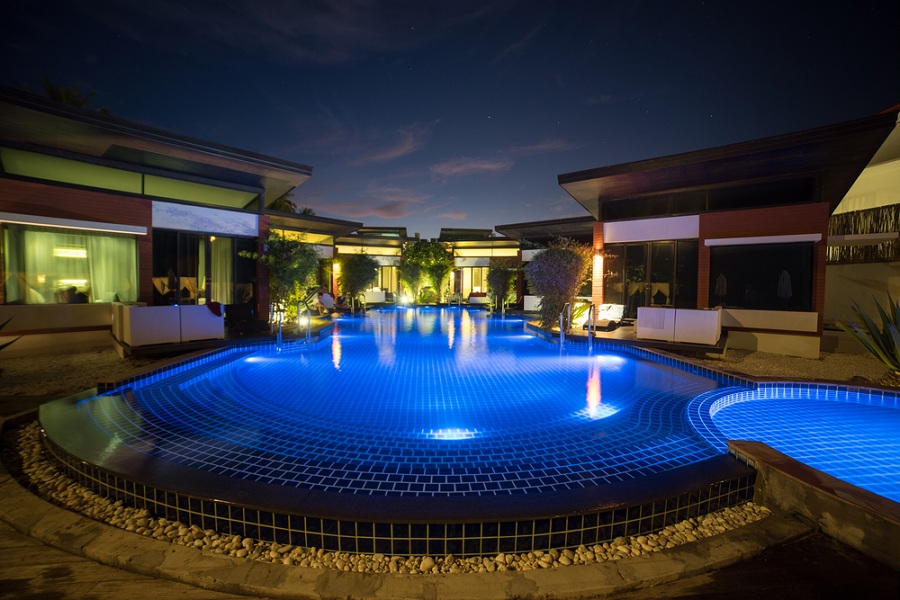
Near the end of your design process, you will need to decide on the features and options for your pool.
There are many choices to make at this point, including:
- Do you want to add a spa or jacuzzi?
- Do you want a waterfall or another water feature?
- Underwater lighting: will one spotlight suffice, or do you want something more decorative?
- Steps or ladder?
- Decorative trim: do you want cobalt blue tiles along the inner lip and edges of your stairs, et al? do you want an all-tile pool surface ($$)? is there a mural in your mind?
- Decking: do you want a standard concrete deck or something more decorative like pavers?
- Heating and cooling: do you live in a colder climate or an especially warm area? do you want solar heating or gas?
- and more
Once your final design is complete, you may need to submit it to your homeowner’s association and/or local authorities for approval.
Step 7 - Get the Right Equipment
To do this job, you will need a LOT of equipment… including:
- a shovel
- a wheelbarrow
- a rake
- a hose
- a bucket
- a tarp
- a level
- a tape measure
- a hammer
- a saw
- a drill
- a power washer
- a sander
- a concrete mixer or a cement truck
- a rebar bender
- plumbing and electrical tools
- a backhoe
- and more.
Whew!
Or, just ask your contractor to bring this with him as he works – and sip a cup of coffee while you watch.
Step 8 - Start Digging
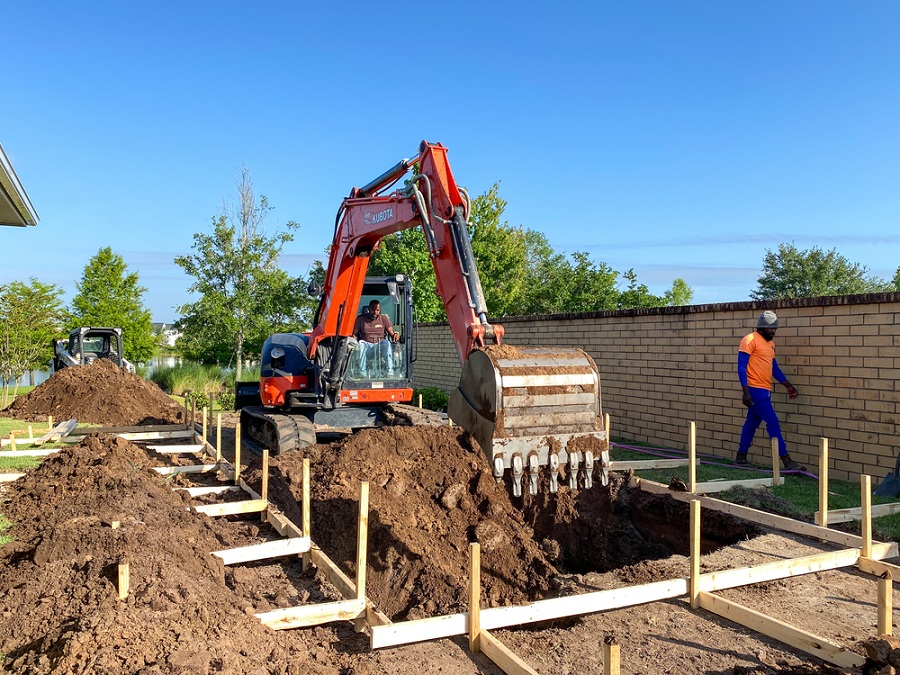
When you’re ready to dig the hole for your pool, you’ll first need to determine how deep you want to dig.
The depth of your pool will depend on the size of the pool itself.
Add more room for a sand-and-gravel foundation.
Plus room for the thick concrete floor.
You’ll need an extra 1-2 feet beyond your pool’s depth to make room for everything.
Step 9 - Lay The Foundation
After you’ve dug the hole for your pool and determined its dimensions, it’s time to lay the foundation.
Before pouring concrete, you’ll need to lay down a layer of sand to form a solid foundation for the concrete structure.
Often, granite composite is added before the sand.
Step 10 - Fabricate the Shell
Next, you will install a steel rebar system on top of the sand to provide a construction frame for your pool.
These steel bars will also reinforce the concrete once it sets.
Step 11 - Install Plumbing & Electrical Lines
Now it’s time to run your plumbing & power lines through the rebar frame and attach your strainers, water jets, pool lighting, water features, and return lines.
Step 12 - Pour Concrete
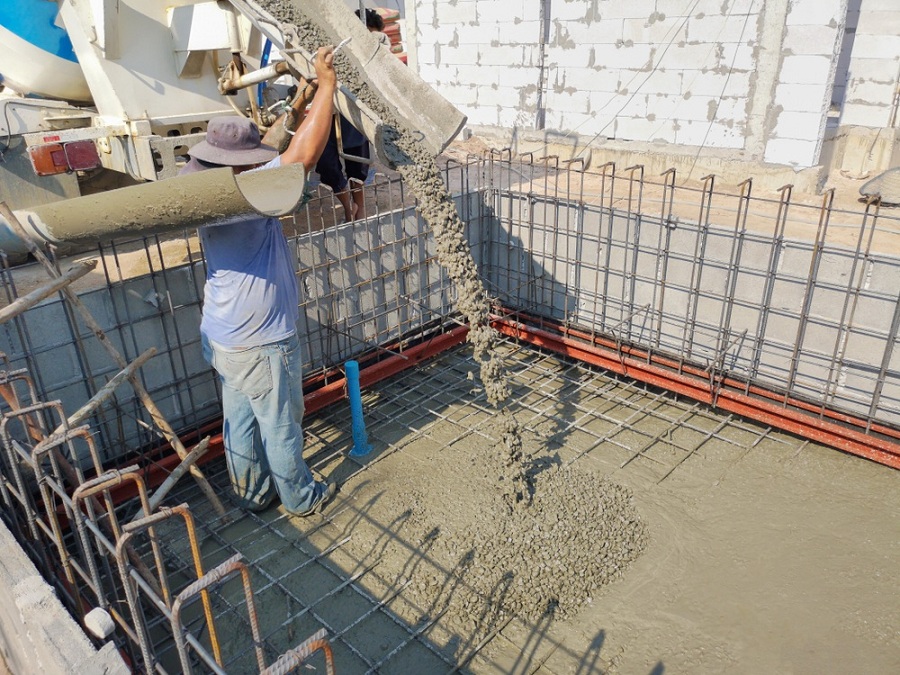
Now it’s time to pour concrete for the floor, walls, and features.
You’ll mix up some concrete using water, sand, and gravel to do this.
For the floor, just pour concrete directly over the rebar.
For walls, steps, and features, you may need to build wooden boxes to contain the concrete until it sets.
Step 13 - Add Coping and Decoration
As the final concrete layer is applied, it’s time to add decorative tiles and attach coping to the structure to complete the fabrication.
Step 14 - Add A Deck
Finally, you’ll need to add a deck above the top of the wall.
It should be at least 4 inches (10 cm) thick.
Step 15 - Install and Test Pool Equipment
The final step is to attach your pool pump, pool filter, and cooling/heating systems to your water lines.
Step 16 - Fill Her Up
Fill the pool with water until it reaches your desired depth. Add chemicals until your chlorine and pH are just right.
Step 17 - Enjoy Your New Pool
Enjoy your new pool!
Safety Considerations While Building A Swimming Pool
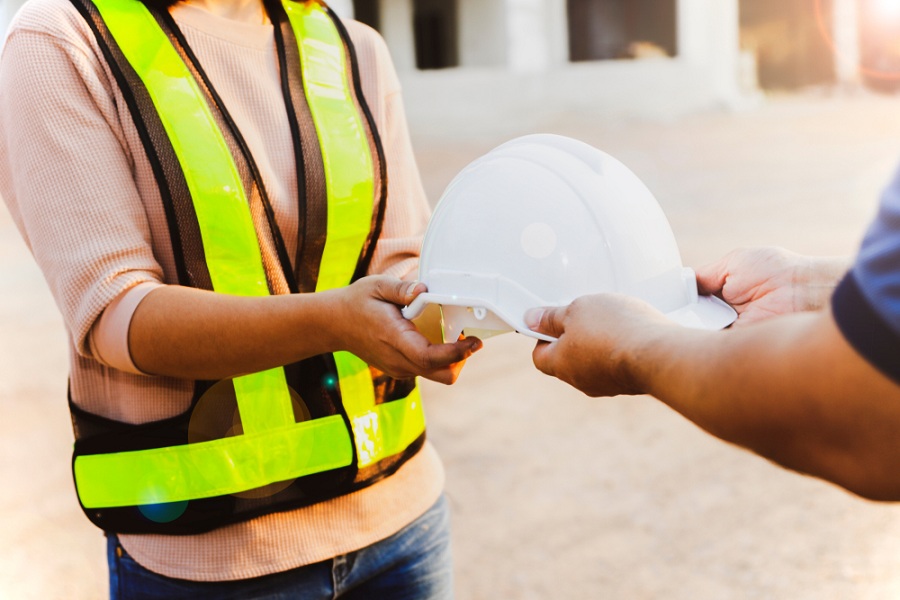
While building a pool, there are many things to consider. Here are some safety tips:
- Always wear protective equipment when working in wet areas.
- Never work alone. Have someone help you if you start having problems.
- Keep children away from pools while they’re being built. They may not understand what’s happening.
- Do not dive into a pool. Wait until it has been filled.
- Be careful when removing tools from the pool. They could fall into the water and hurt themselves.
- Avoid walking on the sides of the pool. You don’t know how deep the water is.
- When pouring concrete, ensure you have enough space between you and the pool’s edge.
- Don’t place anything near the pool that can burn or catch fire.
- Clean all surfaces before placing furniture near the pool.
- Never leave chemicals near the pool.
- Keep pets away from the pool.
- Remove weeds and debris from the pool walls.
- Before entering the pool for the first time, check the temperature. If it’s too hot, wait until it cools down.
- Check the pH levels regularly.
- Don’t let anyone stand inside the pool.
- Make sure the filter is clean and running properly.
- After each use, drain the pool thoroughly.
- Never add chlorine to the pool. This will kill all the beneficial bacteria in the water.
- Keep the pool covered during the winter months.
- Never allow kids to play in the pool without adult supervision.
- Never swim in the pool unless you know how to swim.
- Never take a dip in the pool at night.
- Never jump into the pool.
- Never operate power tools near the pool.
- Never throw objects into the pool.
- Never put sharp objects into the pool. They could cut or puncture your skin.
- Never leave toys in the pool.
- Never cover the pool with plastic. The sun will fade the color.
- Never remove the liner of the pool. The pool will leak.
How to Maintain An-Inground Pool
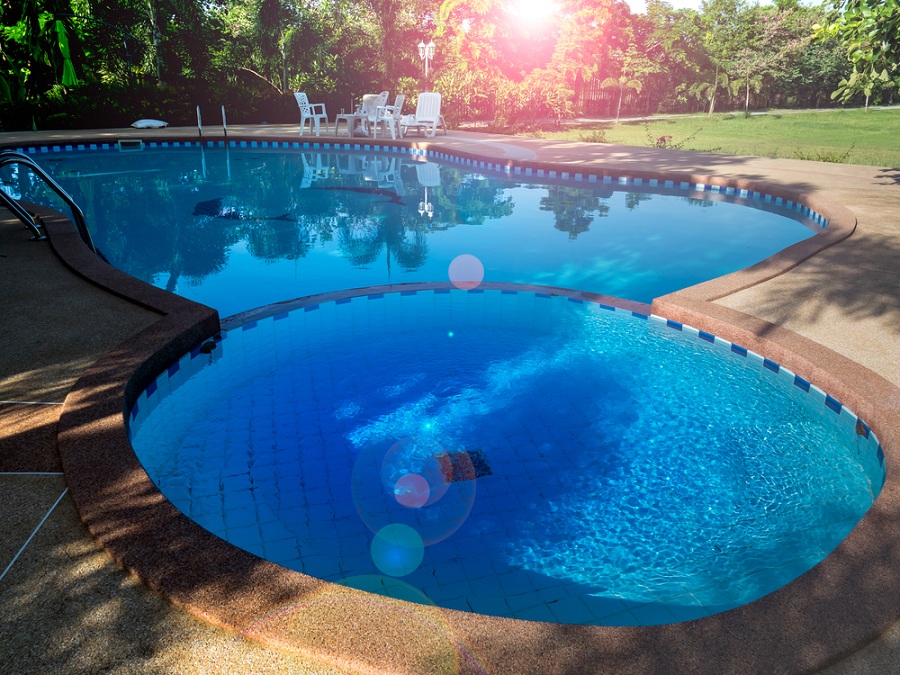
Maintaining an inground pool requires regular upkeep. Here are some maintenance tips:
Keep it Clean
Clean your pool every week. Use a brush to scrub off dirt and debris.
Use a vacuum cleaner to get rid of leaves and other small particles.
Add Chlorine
Chlorine kills harmful bacteria in the water. Add two drops of liquid chlorine to one gallon of water.
Check the pH Levels
The pH level of the water should be 7.0. Add acid (such as vinegar) to lower the pH level if it isn’t.
Change the Filter
Change the filter every month. It will keep the water clean and safe.
Keep the Water Level Correctly
If the water level gets low, add more water. If the water level becomes high, empty some of the water.
If you notice any leaks, fix them immediately.
Inspect the Walls
Look at the bottom of the pool wall to see if there are cracks. Repair these cracks.
Do Not Leave Children Alone Near the Pool
Children who are left alone near the pool might drown.
Never Walk On the Side of the Pool
You don’t want to slip and fall into the pool.
Don’t Allow Pets Inside the Pool
Pets can cause damage to the pool.
Be Careful While Using Power Tools
Using power tools near the pool may cause injury.
Avoid Leaving Chemicals Near the Pool
Chemicals such as bleach can harm the pool.
When using chemicals, wear gloves.
Keep Kids Away From the Pool
Kids shouldn’t enter the pool unsupervised.
Make Sure You Know How To Swim
Swim only when you’re comfortable doing so.
Never Jump Into the Pool
This can hurt your feet, legs, and back.
FAQs

Q: What do I need to build my swimming pool?
A: A swimming pool needs a pump, a filtration system, and a liner.
Q: Do I have to dig up my yard to build a swimming pool?
A: No. You can build a swimming pool on a concrete slab or even on a wooden deck.
Q: Can I build a swimming pool with a flat surface?
A: Yes. Flat surfaces are usually easier to maintain than sloped ones.
Q: Is it possible to build a swimming pool that is not rectangular?
A: Yes, but it’s harder to design and construct.
Q: Will my neighbors complain about noise from my swimming pool?
A. Noise levels from a typical backyard pool range between 55 and 65 decibels. This is similar to the sound produced by a leaf blower or lawnmower.
Q: What kind of construction materials should I use for my swimming pool?
A: Concrete is the most common material used for building pools. Other popular options include vinyl liners and fiberglass.
Q: Where can I buy a swimming pool kit?
A: Most home improvement stores sell kits for building a swimming pool. Kits come with all the necessary components needed to start constructing your pool.
Q: Are there different types of swimming pools?
A: There are several types of swimming pools available. Some are above ground while others are below ground. You choose the type of pool depending on where you live and what features you prefer.
Q: What size swimming pool should I build?
A: Building a swimming pool is easy. The biggest challenge you’ll face is choosing the right size. Your pool size should depend on how many people you plan to swim within the pool. For example, if you have two children, you probably won’t need a big pool. However, if you have five kids, you will need a bigger pool.
Q: How much does it cost to build a swimming pool?
A: It costs anywhere from $1,000 to $20,000, depending on the size, shape, and location of your pool.
Q. How long does it take to build a swimming pool?
A: It takes approximately one month to build a small (10′ x 10′) pool. Larger pools require more time.
Q: How deep should a swimming pool be?
A: The depth of your pool depends on the amount of water it contains. If you want a shallow pool, you can make it 2-3 feet deep. On the other hand, if you want a deeper pool, you can go up to 6-8 feet deep.
Q: Does a swimming pool need a cover?
A: A cover helps keep dirt out of the pool. But, a cover also makes cleaning the pool easier.
Q: How often should I clean my swimming pool?
A: Cleaning your pool once every week is enough. After each cleaning, you must rinse off any debris that may remain on the bottom of the pool.
Q: Should I install a filter in my swimming pool?
A: Filters help remove bacteria and algae from the water. They’re essential when young children might put their hands into the pool.
Q: Can you install a spa in my swimming pool?
A: Spa installation requires special equipment and expertise. You can still add a spa to your existing pool, though. Just remember to check with your local building department before installing anything.
Q: Do I need a permit to build a swimming pool in my yard?
A: Yes, you do need a permit. Contact your local building inspector to find out about requirements and fees.
Q: Is it safe to swim in a swimming pool?
A: Swimming pools provide excellent opportunities for fun and exercise. However, they also pose some risks. Make sure that you follow safety guidelines when using a swimming pool.
Q: What kind of fencing is best for a swimming pool?
A: Fencing around a pool is required by law. The fence must be at least six inches high and made of either wood or metal.
Q: How tall should my swimming pool be?
A: The height of your pool depends on where you live. Generally speaking, most states allow pools between 4-6 feet deep.
Q. How much does it cost for a swimming pool? A: Depending on the size and materials used, a swimming pool can range from $1,000-$20,000.
Q: How long does it take for a swimming pool to dry out?
A: Most swimming pools are designed to hold water for only a few hours. Once the pool has been drained, it usually dries out within 24 hours.
Q: How do I get rid of weeds in my swimming pool?
A: Weeds grow quickly in swimming pools because there’s no oxygen in the water. To eliminate them, use a chlorine solution.
Q: How do I know if my pool needs a liner?
A: Your pool will need a liner if it holds water for more than two weeks. Liners prevent water from leaking through cracks.
Q: How big should my swimming pool accommodate all my family members?
A: The size of your pool depends on how many people you plan to entertain. For example, if you expect to host a large party, you’ll probably want a larger pool.
Q: How can I maintain a swimming pool?
A: Maintaining a pool involves regular maintenance. This includes checking filters, testing pH levels, and keeping the pool free from leaks and cracks.
Q: Will my swimming pool freeze during the winter months?
A: Some pools freeze in cold weather. If this happens, turn off the pump and drain the pool. Then cover the pool with plastic sheeting and wait until springtime.

